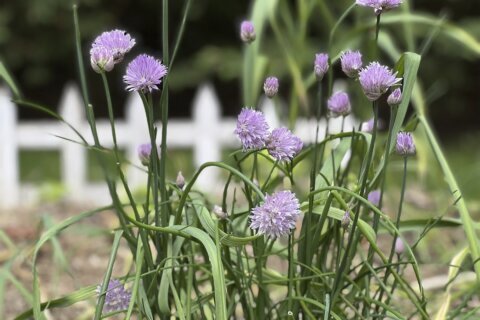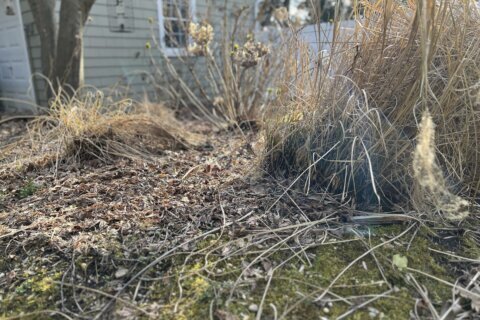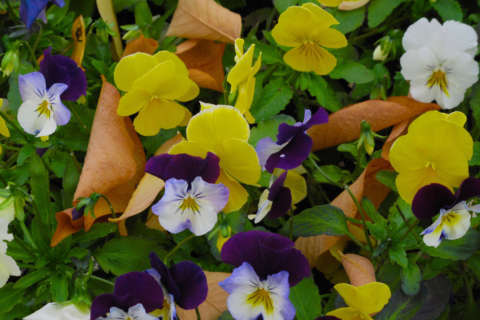Spring cleaning for the yard.
The season is on the cusp of changing, and that means one thing to gardeners: It’s time to get started, and there’s a lot to do before you can plant. Right now is a great time to get your garden ready for the warm season ahead. Follow these tips to help plan your strategy.
Test the soil.
Before you can have a successful garden, you have to know what you’re working with. A basic soil test can be performed using a home kit, or you can contact your university extension for an in-depth analysis.
“Soil testing is important for gardeners because it can provide them with valuable information about the nutrient levels, pH, and overall health of the soil,” says Tom Monson, owner of Monson Lawn & Landscaping in St. Paul, Minnesota. “This information can then be used to determine which fertilizers and soil amendments will be most beneficial for the specific crop being grown.”
Plan your garden.
While you’re waiting for your soil test to come back, take some time to plan this year’s garden. It’s important to consider the land that you have, not the land that you wish you had, when designing gardens or planning for the future. Consider the available sunlight throughout the year, what type of garden you’d like to establish, what kinds of plants you’d like to use, and make sure those hopes and dreams are compatible with the site you have.
“Since the garden is bare at this time of year, you can really look at the structure, or ‘bones’ of your garden, and determine what changes you want to make,” says Emma Martone, curator of the Mariana H. Qubein Arboretum and Botanical Gardens in High Point, North Carolina.
Start your seeds indoors.
Starting seeds indoors can help you get a jump on the growing season, especially if you live in an area with a short season, or where harsh conditions like drought can appear early. This gives you strong plants that will adapt quickly when you put them out in the garden. It’s also important to note your USDA Plant Hardiness Zone when choosing perennials and other plants that you hope will thrive into the next year and beyond. And by knowing the dates of your last frost and fall’s first frost, you can plan when to get those seedlings outside for the best result. Remember that planting zones are a guide; watch your local weather forecasts to really pinpoint planting time.
“Your germination technique may range from simple to complex depending on the specific crop species,” says Audrey Gibson, horticulturist at Vizcaya Museum and Gardens in Miami, Florida. “Since most seeds are influenced by factors such as external temperature and humidity, you can modify these factors to stimulate seed growth. Seed germination often begins when one or both of these factors change.”
Amend the soil.
Once you know exactly what’s going in your garden and where, it’s a great time to add some amendments that can help those plants grow at their very best. You can also apply more general amendments in the fall to help build up the soil. Some common amendments are organic matter, like plant material, compost and aged manure; inorganic amendments include vermiculite, perlite, tire chunks, pea gravel and sand. Do some research to find what’s best for your garden.
“Soil amendment modifies soil qualities by the action of thoroughly mixing inorganic or organic material into the soil in order to improve its physical characteristics and help build up microbial activity,” says Gibson. “It is helpful to determine your garden’s soil type (sand, clay, or loam) before adding an amendment as it will help you determine which amendment is best for your garden.”
Build and repair fences.
Vegetable gardens and delicious landscaping plants need to be protected from roving animals that can devastate a planting in almost no time. You should check your fences and repair them where necessary, replace or clean any copper liners that have been keeping the slugs at bay, and reset any other useful deterrents you’ve been using.
“There are many options to repel pests, but physical barriers are perhaps the most effective way to keep garden pests out,” says Martone. “Barriers can be made from chicken wire, cattle panels, or any other fencing material. Burying mesh fencing several inches underground can also help to deter burrowing mammals.”
Mulch the landscape.
Applying a new layer of mulch to the landscaping and garden areas where weeds can be problematic can help you get ahead of the problem. Mulch also helps the ground retain moisture as the sun starts to shine more and when there’s less rainfall. You generally want to use a layer of organic mulch that’s 2 to 4 inches deep, but pulled back from any plant trunks or structures.
There are some specific pest problems that can be made worse with a thick layer of mulch, like crickets and slugs, so if these are issues, it may be important to consult with a pest control expert on baits and other techniques to maintain successful control.
Apply pre-emergent herbicides.
Where you can’t mulch deeply enough to keep the weeds beaten back, pre-emergent herbicides may be a solid option. They can be very good at preventing seeds from germinating, but it’s important to not use them where you’ll be direct-seeding plants or your seeds may not germinate well, or at all. They can also be applied to lawns. These granules pose virtually no risk to pollinators when applied properly and worked into the soil per package directions.
“A pre-emergent herbicide is a type of weed killer that is applied to the soil before weeds have germinated, and is used to prevent weeds from taking root,” says Monson. “While these herbicides can be effective, it is important to use them responsibly and to make sure to read the label before use.”
If you’re concerned about chemical use in your garden, search for more environmentally friendly options or consider a non-herbicide approach such as weed fabric.
Look for signs of pests and disease.
Pests and disease can be real problems in the garden, and often spread quickly. That’s why it’s so important to do an early spring check of your existing plants for signs of pests or diseases. Leaves that are deformed or have wet-looking holes or paper-thin areas may be showing signs of past disease or pest activity and need treatment and future protection.
Checking the soil around the base of plants, as well as in tilled garden areas, can help uncover pests like grubs, armyworms and other serious pests. Treat as is appropriate and prune back any seriously damaged parts of plants before spring growth begins.
Create beneficial insect habitats.
While you’re looking for signs of pests, keep an eye out for signs of the good guys, too. You want to make sure beneficial insects are preserved as much as possible, so they can help you in the fight for your garden come springtime.
“Beneficial insects need habitat to survive — allow an area of your yard for brush, leaves or other organic debris which provides both space and food for insects,” says Martone. “Ideally, these habitat spaces have been established the previous fall to allow for overwintering. Structures such as ‘bug hotels’ are an attractive way to provide additional habitat in your garden.”
Encourage bee visitors.
Although your vegetable garden might not really get going until late spring, it’s important to start feeding the bees as soon as possible so they’re used to visiting your garden. Lots of perennials, as well as herbs, are huge draws for both native bees and honeybees.
“Herbs such as lavender, basil and parsley, as well as flowers such as cosmos, bee balm and sunflowers, are all great for attracting bees to a vegetable garden,” says Monson. “Planting these in abundance will help to ensure that the bees will be attracted to the garden and will help pollinate the plants. Additionally, you can provide sources of water, such as bird baths or ponds, which will attract other beneficial insects.”
Consider the entire season.
The most important thing to do in the spring is plan for the middle of the summer. It can be fun and exciting to plan a huge garden, but are you really going to be able to maintain all of that when the sun is hot overhead and you have to water every plant individually to keep them from burning up? Sometimes it pays to add just a few new plants each year, rather than going big all at once.
“Try not to go overboard in the number of plants you have in your garden without considering whether you will be able to maintain and care for them throughout their growing season,” says Gibson.
Follow these steps to get your garden spring-ready:
— Test the soil.
— Plan your garden.
— Start your seeds indoors.
— Amend the soil.
— Build and repair fences.
— Mulch the landscape.
— Apply pre-emergent herbicides.
— Look for signs of pests and disease.
— Create beneficial insect habitats.
— Encourage bee visitors.
— Consider the entire season.
More from U.S. News
Benefits of Planting Trees in Your Yard
What Are the Best Driveway Materials?
11 Tips to Get Your Garden Ready for Spring originally appeared on usnews.com







